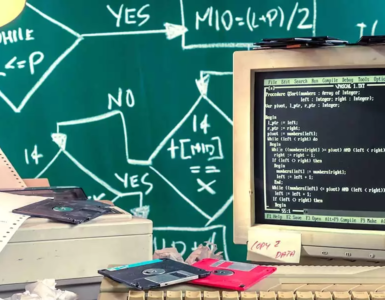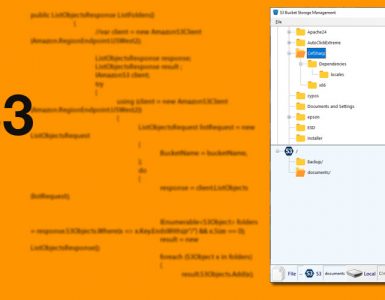How does Walmart Pay work?
To use Walmart Pay, you must first download the Walmart app, create or sign in to your Walmart.com account and update your account to include a preferred payment method; this can consist of any credit or debit card, prepaid account, or Walmart gift card.
While in the store, you will checkout as usual – at any lane. To launch Walmart Pay, open the Walmart app, tap the menu or Services icon, and tap the Walmart Pay icon. After entering your unique security PIN or biometric identification, hold your phone over the QR code to scan. Once the phone registers the QR code, the payment will be processed automatically.
When your transaction is complete, you will hear a sound signaling transaction confirmation, and an eReceipt will appear on your device.”
A brief history of QR codes
QR codes were created in 1994. A Toyota subsidiary developed the code to help in the manufacturing process. It was designed to allow for fast decoding speeds, therefore the name Quick Response code. With the increased popularity and proper recognition of the convenience associated with barcodes, demand for barcodes that could store more information had more variation. It would take up a smaller printing area continuously grew. In response to the increasing demands for storage capacity, functionality, accuracy, etc. in addition to the negative factors associated with the developments in bar code technology, came 2D (two-dimensional) QR codes.
QR Codes in mobile payments
EMVCo, the global technical body that manages EMV specifications, officially announced the release of two QR code payment specifications supporting merchant-presented QR code and consumer-presented QR code use cases. They outline both how consumers can convey payment information to a merchant as well as how merchants can convey purchase information to applications that can initiate a payment. According to EMVCo:
“The clarity provided by the specifications will enable merchants to accept QR Code payment solutions from various providers in a standardized manner. Consumers will also benefit from a more uniform experience that offers greater convenience and familiarity.”
In 2016 alone, there were $5.5 trillion of mobile payment transactions in China. Most of these transactions handled via QR Codes on the Alipay and WeChat networks! QR code payments accelerate the process of displacing cash and moving towards a cashless economy.
In November 2016, India accelerated its path toward becoming a cashless society by rapidly demonetizing and removing 86 percent of all cash from its economy. That led the country to the accompanying adoption of a QR code-focused payment scheme based on Visa’s mVisa standard.
In May 2017, Visa, Mastercard, and UnionPay International introduced a Standardized Quick Response (QR) Code for payments, accelerating Thailand’s transition to a cashless society.
QR Code payment security loopholes
A two-year study by researchers at the System Security Lab at the Chinese University’s department of information engineering looked at four forms of data exchange that have been widely adopted in mobile payments.
Hackers can, the study found, obtain a token by tampering with the transmission process using signal jammers or even gain access to the phone’s camera to record an image of a QR code. They can then use stolen tokens to buy other things using the victim’s money.
Scammers have also been profiting handsomely from the mainland’s multibillion-dollar bike-sharing industry. By replacing the original QR code used to unlock the bicycle with a fake one, they have been able to cheat users into transferring their money into their bank accounts.
As of April 1st, 2018, China’s central bank has announced plans to begin regulating payments by QR codes, barcodes, and other scannable codes. The regulations will initially cap payments by traditional QR codes to 500 yuan, or about $76. When additional security measures are applied, the cap can raise to 5,000 yuan, or around $765. At an even higher security level, banks and payment processors are given discretion over the cap.
The central bank wants to see QR payments adopt tokenization, expiration dates, and anti-counterfeit measures. It also suggests the use of encryption, frequent updates, risk monitoring, and security software.
QR Code payments in eCommerce
What if we used a QR code to carry purchase information not only from a physical store – such as in Walmart’s case – but also from an online transaction? Instead of the eCommerce site asking consumers to enter their payment information, they would display a QR code on consumers’ screens. The consumers would then hold up their mobile phone to the screen and read the code with a payment application on the device to initiate the payment. There’s no entering of sixteen-digit numbers, expiration dates, less room for errors, or exposure of sensitive information!
Instead of the consumer providing payment information to the merchant, which then must request the funds from the consumer’s bank, the consumer obtains the purchase information from the merchants and pushes a payment to them. The use of QR Codes in e-commerce empowers the consumer to approve and send a payment rather than relying on the merchant to request the payment with consumers’ sensitive information.
Strategic implications of QR codes
The rapid expansion of usage of QR codes for payments has a multitude of implications for banks and card schemes as well as for other industry players. Companies will need to decide how to play and develop new strategies quickly to stay in the game. One impact is the shift towards interoperability.
Whereas Alipay and Tenpay in China, as well as the initial versions of mVisa, used proprietary QR codes, usage of interoperable QR code payments is growing. These interoperable solutions bring tremendous efficiency to merchants and better scalability for banks. Card schemes, as well as wallets (such as Alipay and WeChat Pay that have proprietary QR code payments services), will need to decide whether to shift towards full interoperability so that they can offer a seamless payment experience globally, or continue to try to preserve their turf by offering proprietary solutions.
Another critical impact of QR codes could be their effect on near field communication (NFC) payments. While Apple Pay and Samsung Pay, as well as other “Pay” solutions, have launched with great fanfare, actual usage of NFC contactless services has often been low. Moreover, merchants usually need to install a contactless card reader or upgrade their POS terminal to accept NFC payments. Industry players may need to rethink their payments strategy in light of the new QR code options, and handset manufacturers may need to consider what to do with NFC if QR code usage begins to expand faster.
More broadly, QR codes could have a tremendous impact on financial inclusion and bank liability products. One of the difficulties for consumers in remote areas has been using digital money, even if they have a plastic card or a phone. POS terminals were often too expensive to install in sufficient numbers to make a card or even mobile payments viable. Now, QR codes give merchants a cheap and easy way to accept digital payments. Once QR code payment acceptance becomes more broadly available, it will be easier for consumers to use the money they store on their phone.
Whatever happens, QR codes have opened up more options for more payments and more quickly than many people expected. Banks, as well as other payments industry players, will need to review their strategies rapidly to take full advantage of this rapidly-emerging payment alternative.
Final thoughts
QR codes, it seems, will be many things to many consumers depending on where they are in the world. And, while they may never quite catch on in the United States the way they have in China, it is safe to say the QR code is, at the very least, no longer a punchline in a joke about terrible ideas graveyard owners have had.





